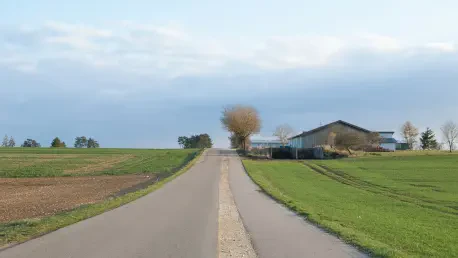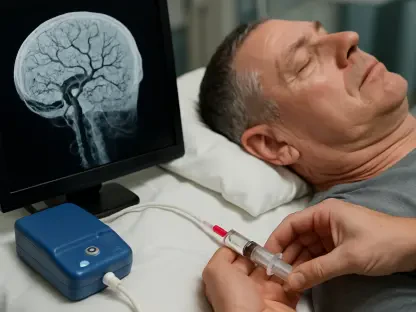In the vast stretches of rural America, accessing quality healthcare often feels like an insurmountable challenge, with hospital closures, dwindling numbers of medical professionals, and alarming rates of chronic illness creating a crisis that demands urgent attention. A newly launched $50 billion federal initiative, known as the Rural Health Transformation Program, established under the One Big Beautiful Bill Act, offers a glimmer of hope to states grappling with these issues. This substantial funding is designed to rejuvenate rural healthcare systems at a critical juncture when significant Medicaid cuts loom large, threatening to deepen existing disparities. Across the nation, states are diligently crafting detailed proposals to tap into these funds, aiming not only to retain doctors in underserved areas but also to combat the pervasive health challenges that plague rural communities. This article delves into the innovative strategies being proposed, highlighting how states are addressing provider shortages, leveraging technology, tackling chronic diseases, supporting mental health, and building regional solutions to transform rural healthcare.
The stakes are incredibly high for rural residents who face barriers that urban populations rarely encounter. From limited emergency services to long, arduous journeys to the nearest clinic, these challenges contribute to higher rates of premature death and untreated conditions. With over 700 rural hospitals teetering on the brink of closure due to financial instability, the federal program represents a vital lifeline. However, even with this significant investment, many health leaders remain skeptical about whether it can fully offset the impending budget reductions, underscoring the complexity of revitalizing rural healthcare systems.
Bridging the Gap in Medical Workforce
One of the most pressing obstacles in rural healthcare is the persistent shortage of doctors and other medical professionals willing to serve in remote locations. States like North Dakota, where nearly 75% of rural counties lack sufficient primary care providers, are putting forward creative incentives to attract talent. Proposals include offering housing support and establishing on-site childcare at health facilities, addressing both professional and personal barriers that often deter practitioners from rural practice. These measures aim to create an environment where healthcare workers can envision a sustainable future, ensuring that communities are not left without essential medical services due to staffing challenges.
Retention of medical talent is equally critical, as many rural areas struggle with high turnover rates among healthcare providers. Several states are advocating for the expansion of rural residency programs and apprenticeships, designed to train professionals specifically for the unique demands of rural settings. By fostering a pipeline of doctors and nurses committed to long-term service in these areas, the hope is to build a stable workforce. This approach reduces dependence on temporary or traveling practitioners who may leave after brief periods, often disrupting continuity of care for patients who rely on consistent medical relationships to manage their health effectively.
Leveraging Technology for Better Access
Technology is increasingly viewed as a transformative tool to overcome the geographical barriers that define rural healthcare challenges. States such as Colorado are channeling funds into telehealth platforms and remote patient monitoring systems to manage chronic conditions like diabetes and high blood pressure. These innovations enable physicians to track patients’ vital health metrics in real time, eliminating the need for frequent, burdensome trips to distant clinics. This not only improves patient outcomes by ensuring timely interventions but also alleviates the strain on limited local healthcare infrastructure, making care more accessible for those in isolated regions.
Beyond physical health, technology is also being harnessed to address mental health needs, which are particularly acute in rural communities with elevated rates of suicide and substance abuse. Proposals across multiple states include virtual counseling services and digital platforms that connect patients with specialists, regardless of location. This digital outreach ensures that even the most remote residents can access critical mental health support, which might otherwise remain out of reach due to distance or stigma. By integrating technology into healthcare delivery, states aim to create a more inclusive system that meets diverse needs without requiring extensive travel or resources that rural areas often lack.
Combating Chronic Illness and Emergency Shortfalls
Chronic illnesses, including heart disease and respiratory conditions, disproportionately burden rural populations, largely due to inadequate access to preventive care and specialized treatment. New Mexico stands out with a proposal to allocate substantial funds toward specialty care and disease management programs tailored for high-risk groups in rural settings. This focus on targeted interventions seeks to address root causes, such as poor nutrition or delayed diagnoses, that exacerbate chronic conditions. By investing in community-based health initiatives, states hope to promote healthier lifestyles and reduce the long-term burden of these diseases on both individuals and local healthcare systems.
Emergency medical services (EMS) represent another critical area of concern, particularly in regions often referred to as “EMS deserts” due to sparse coverage. Colorado has put forward a plan to invest millions over the next several years to expand rural EMS capabilities, recognizing that timely medical response can be the difference between life and death in remote areas. Enhancing EMS infrastructure ensures that residents far from hospitals receive swift care during critical moments, addressing a fundamental gap in rural healthcare. Such investments aim to bolster community resilience, providing a safety net for those who might otherwise face dire consequences due to delayed emergency responses.
Prioritizing Mental Health and Tribal Needs
Mental health issues, including addiction and suicide, are alarmingly prevalent in rural areas, prompting states to prioritize behavioral health in their funding applications. West Virginia, burdened by the highest opioid overdose rate in the nation, is focusing on strengthening addiction treatment services as part of its strategy. Meanwhile, North Carolina aims to expand community mental health clinics and integrate behavioral health into broader regional care networks. These efforts reflect a growing recognition that mental health is inseparable from overall well-being, and addressing it requires accessible, localized solutions that can reach vulnerable populations often overlooked in rural settings.
States with significant Native American populations, such as North Dakota and New Mexico, are also tailoring initiatives to meet the unique needs of tribal communities. Proposals include modernizing electronic health record systems in underfunded tribal facilities to enhance care coordination and data sharing. These upgrades tackle systemic barriers that have historically limited access to quality healthcare for Native American residents, often compounded by geographic isolation and cultural differences. By focusing on these specific improvements, states aim to ensure equitable healthcare delivery, acknowledging the distinct challenges faced by tribal groups and working to bridge long-standing gaps in service provision.
Creating Regional and Transportation Solutions
To address the diverse needs of rural communities, many states are proposing the development of regional “hubs” that coordinate healthcare services across clinics, pharmacies, and public health agencies. Missouri, for instance, is emphasizing data sharing and integration of care in regions severely impacted by hospital closures. This model empowers local stakeholders to design solutions that align with their specific circumstances, fostering a sense of ownership over health outcomes. By linking various providers into a cohesive network, these hubs aim to ensure that even communities without major medical facilities can still access comprehensive care tailored to their unique challenges.
Transportation remains a formidable barrier for rural residents who must often travel vast distances to reach healthcare providers. West Virginia is proposing a novel rural transportation system, incorporating rideshare services and partnerships with EMS and hospitals to facilitate patient access to care. This initiative recognizes that without reliable means to reach medical facilities, even the best healthcare programs can fall short. Addressing transportation not only improves access to routine and emergency services but also supports broader health goals by ensuring that distance does not prevent individuals from seeking necessary treatment or preventive care.
Reflecting on Rural Healthcare Progress
Looking back, states demonstrated remarkable determination in responding to the rural healthcare crisis through their detailed proposals for the Rural Health Transformation Program. Despite the promise of $50 billion in federal funding, the shadow of substantial Medicaid cuts casts a lingering uncertainty over the sustainability of these efforts. Innovative strategies targeting provider shortages, technology integration, chronic disease management, mental health support, and regional coordination emerged as pillars of hope for underserved communities. Yet, the constraints on fund allocation and the sheer scale of financial challenges fueled skepticism among health leaders about long-term impact.
Moving forward, the focus must shift to ensuring that these funds catalyze enduring change rather than temporary relief. States should prioritize sustainable models, such as ongoing workforce development and scalable telehealth solutions, to build resilience in rural healthcare systems. Collaboration between federal, state, and local entities will be essential to address structural issues, like hospital closures, that funding alone cannot solve. By learning from initial implementations and adapting strategies to evolving needs, there is potential to transform rural healthcare into a robust, accessible network that truly serves every community, no matter how remote.









